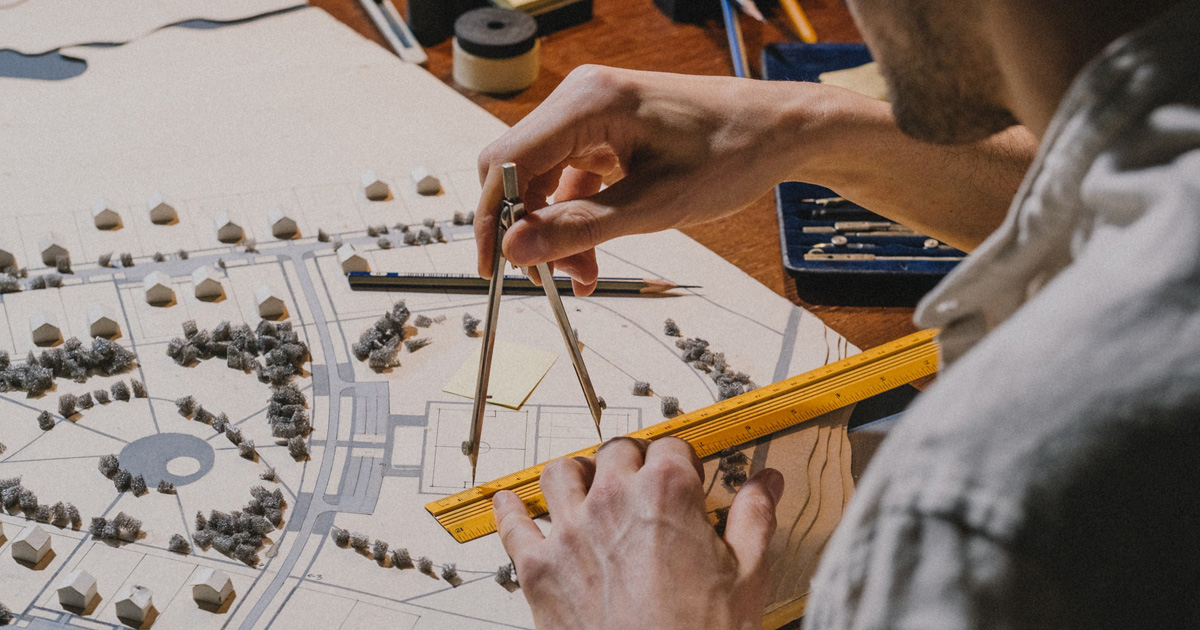Architect Firm Marketing Strategies That Deliver Results
Architect Firm Marketing Strategies That Deliver Results
Blog Article
Understanding the Diverse Career Paths Available for Aspiring Architect
As an aspiring Architect, you have a globe of job paths waiting for you. Whether you're attracted to conventional architecture or the subtleties of sustainable layout, there's a specific niche that straightens with your interests.
Traditional Design: Creating Buildings and Frameworks
Traditional design concentrates on designing structures and frameworks that mix functionality with visual allure. As you discover this field, you'll appreciate the elaborate balance between form and objective. You'll find out to draw inspiration from historic styles, integrating aspects like balance, products, and workmanship. Your styles can mirror social heritage, showcasing regional customs while fulfilling modern-day needs.
You'll create abilities in drafting, model-making, and site analysis, enabling you to picture and connect your ideas properly. Engaging with clients, you'll require to recognize their vision and translate it into possible designs.
In addition, developing codes and sustainability practices are crucial in your job, guaranteeing your structures are secure and eco-friendly. As you grow in your job, you'll discover chances in residential, business, and even repair jobs, each offering special challenges. Embracing conventional design leads the way for a satisfying job that pays tribute to the past while shaping the future.
Urban Preparation: Shaping Communities and Public Spaces
As an aspiring Architect, you can play a vital duty as an urban planner, transforming just how communities engage and operate. By utilizing neighborhood interaction techniques, you'll ensure that residents have a voice fit their environment. And also, incorporating sustainable design principles will aid create rooms that not only fulfill today's needs however also protect the future.
Role of Urban Planners
While numerous might think of architects as the sole dreamers behind structures, city coordinators play a vital role in shaping the broader landscape of areas and public spaces. They examine land usage, zoning regulations, and community needs to create lasting atmospheres that improve lifestyle. By collaborating with various stakeholders, you'll aid make parks, transportation systems, and suburbs that promote social interaction and ease of access. Urban coordinators also concentrate on ecological factors to consider, ensuring that growths incorporate environment-friendly spaces and assistance biodiversity. Your competence in spatial design and community dynamics permits you to envision future development while protecting social heritage. In this essential duty, you'll straight affect just how individuals experience their surroundings, making every task a chance for favorable modification.
Neighborhood Interaction Methods
Reliable area involvement strategies are important for urban organizers to assure that the voices of residents are heard and valued in the preparation procedure. To cultivate meaningful dialogue, you need to prioritize open discussion forums and workshops where neighborhood members can reveal their ideas and problems. By proactively listening and including comments, you'll produce spaces that show the community's demands, eventually leading to even more lasting and effective city settings.
Lasting Design Principles
When designing urban rooms, integrating lasting layout concepts is critical for developing settings that prosper both environmentally and socially. You should begin by concentrating on energy performance, utilizing products that reduce waste and advertise recycling. Take into consideration integrating eco-friendly areas, like parks and yards, to enhance biodiversity and boost air top quality. Advertising walkability and public transportation can minimize dependence on automobiles, cultivating a much healthier neighborhood.
Creating with water conservation in mind is likewise crucial-- consider rain gardens and permeable surfaces to manage stormwater. Entailing community participants during the planning procedure assurances that the spaces you produce fulfill their needs and urge social interaction. By welcoming these concepts, you'll contribute to dynamic, sustainable city landscapes that profit everybody.

Landscape Style: Creating Sustainable Exterior Environments
As you check out landscape architecture, you'll find necessary layout principles that develop attractive and practical outdoor areas. Lasting techniques play a vital function in guaranteeing these environments grow while reducing environmental influence. Plus, you'll locate a range of job possibilities that enable you to make an actual difference in just how people engage with nature.
Design Concepts in Landscape
Comprehending layout concepts in landscape design is crucial for creating lasting outdoor environments that integrate with nature. You'll require to ponder components like percentage, balance, and range to ensure your styles feel cohesive and welcoming. Additionally, pay attention to seasonal changes, designing with products that enhance the environments year-round.
Lasting Practices Introduction
Sustainable methods in landscape design not just focus on aesthetic appeals but likewise focus on eco-friendly health and resource conservation. You can develop areas that promote soil wellness, such as utilizing natural products and exercising permaculture concepts. Ultimately, these practices assure your designs benefit both people and the atmosphere for years to come.
Job Opportunities Exploration
With a solid structure in lasting methods, landscape design uses a variety of career courses that enable you to make a meaningful influence on the environment. Urban organizers often work together with landscape engineers to develop green rooms in urban settings, boosting city livability. If you're enthusiastic regarding education, take into consideration ending up being a landscape style teacher, motivating future generations.
Sustainable Layout: Focusing on Eco-Friendly Practices
As you discover your profession in architecture, welcoming environmentally friendly techniques can establish you apart in a competitive area. Lasting style concentrates on developing structures that minimize ecological influence while boosting passenger wellness. By websites integrating renewable materials, energy-efficient systems, and sustainable structure methods, you'll add to a greener future.
Beginning by obtaining understanding of green certifications like LEED or BREEAM, which can bolster your credentials. Think about how all-natural light, ventilation, and thermal performance can optimize style. Team up with engineers and ecological specialists to innovate remedies that lower waste and save sources.
Don't neglect the value of neighborhood participation-- engaging local stakeholders can motivate designs that harmonize with the setting. As customers progressively focus on sustainability, your knowledge in Home Page green practices will certainly not only draw in tasks but also accomplish your interest for responsible architecture. Embrace this essential element of the profession, and watch your occupation thrive.
Historic Preservation: Safeguarding and Bring Back Social Heritage
While you start on your building trip, think about the necessary duty of historic conservation in keeping our social heritage. This field focuses on the security and reconstruction of considerable buildings, sites, and frameworks that tell the stories of our past. By involving in historical conservation, you'll help safeguard the building tradition that forms area identification.
As a historic preservation Architect, you'll analyze historic value and analyze the problem of frameworks. You'll function carefully with historians and preservationists to guarantee genuine reconstruction strategies are employed. This job path enables you to blend creative thinking with research, enabling you to develop services that value initial products and craftsmanship.
Your job not only contributes to sustainability by recycling existing buildings however also fosters a feeling of satisfaction within neighborhoods. Welcoming this course will help you come to be a guardian of background, preserving the tales and aesthetics that enrich our lives.
Interior Design: Enhancing Indoor Spaces
Historic preservation and indoor style both share a dedication to boosting the built setting, but they concentrate on various facets. While historic conservation emphasizes preserving a framework's cultural and historical worth, interior architecture zeroes in on enhancing indoor rooms for performance and looks.
As an ambitious Learn More Here Architect, you'll find that interior architecture allows you to blend creativity with technical abilities. You'll develop spaces that not only look great but also promote convenience and performance. This area entails understanding how light, shade, and materials communicate within a space, impacting mood and usability.
You'll deal with various projects, from residential homes to industrial workplaces, making certain that each environment fulfills the requirements of its residents. By prioritizing individual experience, you can change insides right into motivating and practical rooms, making a considerable effect on just how people interact with their surroundings. Accept the chance to enhance interior atmospheres and form the means individuals live and work.
Industrial Style: Merging Capability With Appearances
Industrial design plays a necessary role in developing items that effortlessly mix aesthetics with functionality, making sure that what you make use of everyday is not only visually appealing yet likewise sensible. As a hopeful Architect, you can immerse yourself in this field, focusing on designing everything from furnishings to consumer electronic devices. Your work includes comprehending user requirements, products, and manufacturing procedures, enabling you to produce innovative remedies that boost daily experiences.
In industrial design, you'll frequently work together with suppliers, marketers, and engineers, making certain that your designs are not only lovely but likewise feasible. You'll learn to stabilize kind and function, prioritizing usability without compromising style. By honing your abilities in laying out, 3D modeling, and prototyping, you'll be well-equipped to bring your concepts to life. This occupation path offers a dynamic atmosphere where creativity meets practicality, making it a fulfilling choice for designers thinking about shaping the products of tomorrow.
Often Asked Questions
What Educational Accreditations Do I Need to Become a Designer?
To become an engineer, you'll require an expert level in architecture, typically a Bachelor's or Master's. Additionally, you'll need to finish a teaching fellowship and pass the Architect Enrollment Exam to practice lawfully.
Are There Qualification Requirements for Different Building Occupation Paths?
Yes, there're qualification demands for numerous architectural courses. Architect. You'll need to pass exams, complete teaching fellowships, and in some cases seek specialized training, depending on your selected focus, like landscape design, metropolitan style, or historical conservation
What Software Application Skills Are Important for Architects Today?

How Can I Gain Practical Experience While Studying Style?
You can obtain functional experience by interning at architectural companies, joining layout competitions, offering for area tasks, or working together with classmates on real-world tasks. These possibilities boost your skills and develop important links in the industry.
What Job Opportunities Exist Outdoors Traditional Design Firms?
You can discover various task chances outside conventional architecture firms, like city preparation, interior decoration, landscape style, building and construction management, genuine estate growth, or perhaps roles in sustainability consulting. Each offers special difficulties and incentives.
Whether you're attracted to conventional style or the nuances of lasting design, there's a specific niche that lines up with your interests.When creating metropolitan rooms, incorporating lasting design principles is vital for creating environments that flourish both environmentally and socially.As you discover landscape architecture, you'll find important style concepts that create stunning and practical outside areas.Comprehending layout principles in landscape architecture is essential for producing sustainable outdoor environments that harmonize with nature.In commercial style, you'll frequently collaborate with designers, marketing experts, and manufacturers, ensuring that your layouts are not only gorgeous however additionally possible.
Report this page